A model for the ultrastructure of bone based on electron microscopy of ion-milled sections
- PMID: 22272230
- PMCID: PMC3260135
- DOI: 10.1371/journal.pone.0029258
A model for the ultrastructure of bone based on electron microscopy of ion-milled sections
Abstract
The relationship between the mineral component of bone and associated collagen has been a matter of continued dispute. We use transmission electron microscopy (TEM) of cryogenically ion milled sections of fully-mineralized cortical bone to study the spatial and topological relationship between mineral and collagen. We observe that hydroxyapatite (HA) occurs largely as elongated plate-like structures which are external to and oriented parallel to the collagen fibrils. Dark field images suggest that the structures ("mineral structures") are polycrystalline. They are approximately 5 nm thick, 70 nm wide and several hundred nm long. Using energy-dispersive X-ray analysis we show that approximately 70% of the HA occurs as mineral structures external to the fibrils. The remainder is found constrained to the gap zones. Comparative studies of other species suggest that this structural motif is ubiquitous in all vertebrates.
Conflict of interest statement
Figures
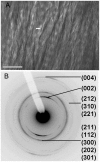

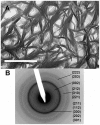
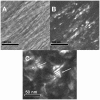
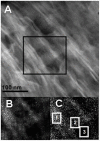



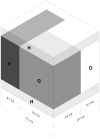

References
-
- Robinson RA, Watson ML. Collagen-crystal relationships in bone as seen in the electron microscope. Anatom Rec. 1952;114:383–409. - PubMed
-
- Arsenault LA. A comparative electron microscopic study of apatite crystals in collagen fibrils of rat bone, dentin and calcified turkey leg tendons. Bone Miner. 1989;6:165–177. - PubMed
-
- Landis WJ, Hodgens KJ, Arena J, Song MJ, McEwen BF. Structural relations between collagen and mineral in bone as determined by high voltage electron microscopic tomography. Microsc Res Tech. 1996;33:192–202. - PubMed
-
- McEwan B, Song MJ, Landis WJ. Quantitative determination of the mineral distribution in different collagen zones of calcifying tendon using high voltage electron microscopic tomography. J Comput Assist Microsc. 1992;3:201–210. - PubMed
-
- Siperko LM, Landis WJ. Aspects of mineral structure in normally calcifying avian tendon. J Struct Biol. 2001;135:313–320. - PubMed
Publication types
MeSH terms
Substances
LinkOut - more resources
Full Text Sources
Miscellaneous

